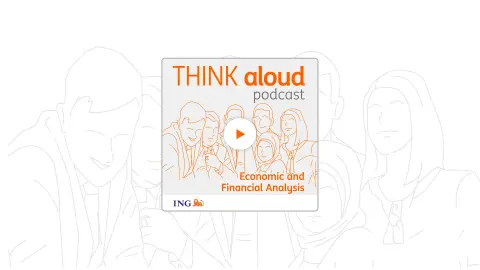Mexico: Cutting short the easing cycle
Mexican policymakers seem ready to conclude the monetary easing cycle, even though the country’s monetary stimulus remains unusually modest, when compared to its regional peers. The expected 25bp rate cut at this week's meeting, to 4.25%, should be the last of the current cycle
A hesitant Banxico
The balance of risks for Mexico’s post-pandemic outlook for economic activity remains skewed to the downside, with consensus expectations consolidating at a 2020 GDP contraction of -10%, among the worst in LATAM.
Despite this grim outlook and the rising output gap, central bank officials have refrained from replicating the aggressive rate-cutting cycle seen throughout LATAM in recent months. Moreover, the hawkish dissent seen at the last policy meeting, when one board-member (Irene Espinosa) called for a smaller rate cut of 25bp, presaged a growing discomfort with the consequences of the easing cycle.
Mexican policymakers appear more concerned than their LATAM peers about the incipient rise in food prices, which helped push headline inflation slightly above the targeted range in August (4.05% YoY).
Rising food prices was seen across the region, but it was generally downplayed by local policymakers, who tended to view the fact as the result of pandemic-related temporary supply constraints and changes in consumption patterns, with limited potential for lasting damage to inflation dynamics.
The rise in inflation expectations towards the upper-bound of the targeted range is more concerning, as it calls into question the credibility of the inflation targeting regime.
But, ultimately, Banxico’s enduring concerns regarding the impact of rate cuts over local market stability, which could be compromised if capital outflows surge, suggest that tolerance for additional cuts is likely very close to its limit. The assumption is that a sufficiently large Mexico/US rate differential is crucial to anchor local markets.
These factors suggest that this Thursday’s monetary policy meeting should conclude with policymakers slowing down the pace of rate cuts, to 25bp from 50bp, and emphasizing the reduced room for additional easing, when considering the rising price pressures seen in recent months.
We suspect officials will not explicitly signal the end of the cycle. But, at 4.25%, the tolerance for additional rate cuts would be considerably lower and would likely require significant improvements in the outlook for inflation and a stronger MXN. We now expect the cycle to end after this week’s rate cut, with the benchmark rate at 4.25%, instead of our previous call of 4.0%.
A cloudier near-term outlook for EM assets
As we’ve discussed before, Banxico often cites Mexico/US interest rate differential as an important input in its reaction function, given its perceived impact over FX flows. As seen in the chart below, that differential should drop to 4.0% this week, or 175bp below the level prevailing in the recent 2017-20 period, which was marked by broad stability in non-resident holdings in the local government debt market.
Apart from the uncertainties generated by this narrowing rate differential, greater caution by central bank officials could also be justified by the recent rise in market volatility.
Even though the Mexican peso has been a clear outperformer over the past couple of months, the outlook for EM currencies appears cloudier now, amid heightened uncertainties regarding the global outlook for Covid-19 and economic activity, along with lingering concerns regarding the US fiscal stimulus and the November Presidential election.
A winning short-term strategy (for fixed income assets)
Judging by the relative performance of local fixed-income assets and the MXN, the current economic policy strategy, marked by a relatively hawkish fiscal and monetary policy stance, has proved successful at boosting appetite for some local assets.
The unusually modest policy stimulus is not without risks, however, as it should deepen the recession and delay the recovery, likely causing deeper permanent damage to economic activity and the country's long-term trajectory.
But, in the shorter-term, it should continue to be seen as a safer path, when compared to regional peers. As seen in the brewing fiscal concerns in Brazil and other large LATAM countries that stretched the limits of what EM economies can do in terms of fiscal stimulus, investor concerns over fiscal sustainability may take longer to dissipate.
Overall, the recent rise in volatility could reduce the appeal of the carry trade but Mexico’s stronger-credit rating suggests that, in the shorter-term, the country's local fixed-income assets should remain the asset-of-choice to boost LATAM/EM exposure in the context of a weakening USD and low rates.
This publication has been prepared by ING solely for information purposes irrespective of a particular user's means, financial situation or investment objectives. The information does not constitute investment recommendation, and nor is it investment, legal or tax advice or an offer or solicitation to purchase or sell any financial instrument. Read more
Tags
Mexico central bankDownload
Download article
22 September 2020
Covid spikes threaten the recovery This bundle contains 10 Articles